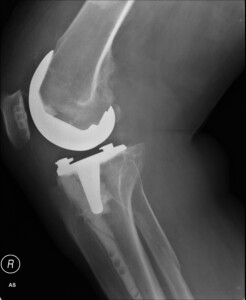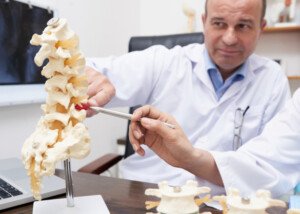
Despite how common total knee replacement is, many patients end up with failed or loosened hardware that causes pain and crashes their hopes of regaining mobility.
Approximately 50,000 people in the U.S. are diagnosed with a failed total knee replacement each year.
Revision surgeries are often required to address the malfunctioning hardware.
Risk Factors for a Failed TKR
“Oftentimes, we don’t know why they loosen,” says Jeffrey A. Geller, MD, Associate Chief, Division of Hip & Knee Reconstruction; Director, Minimally Invasive Hip & Knee Replacements, Columbia University Medical Center, NY, NY.
“It is assumed that some combination of prolonged time since surgery, and active lifestyle, leads to a process where the cement de-bonds from the bone.
“Rarely, prosthetic design may be inferior, leading to earlier loosening, but most popular designs have done well with good medium to long-term results reported in the scientific literature.”
A failed knee replacement can also result from infection or misalignment.
Symptoms of a Loosened Knee Replacement
Pain and swelling in the affected joint
Pain upon sitting and standing
Pain while walking
A sensation of warmth or heat at the knee
A feeling of instability when standing or walking
The symptoms may not occur for a while following the surgery, and thus, the patient may not make the connection, and instead blame the pain on other factors such as nerve compression in the back, which can actually cause pain in the knees.
Nerve compression in the back, particularly in the lumbar (low back) region, can certainly cause knee pain.
This occurs when nerves exiting the spine become pinched or irritated, often due to conditions like herniated discs or spinal stenosis.
The compressed nerves can radiate pain down the leg, sometimes manifesting as knee pain despite the issue originating in the back.
This referred pain is a result of the complex nerve pathways and how they interact with different parts of the body.
Since the replacement surgery may initially be successful, it can take quite some time before the patient realizes the possibility that perhaps the knee replacement has become loose or in some way is not working properly.
The pain can radiate beyond the knee and up the thigh, mimicking iliotibial band syndrome, as well as mimicking the pain in the upper legs that can result from spinal stenosis (narrowing of the spinal canal).

 Dr. Geller
Dr. Geller







































